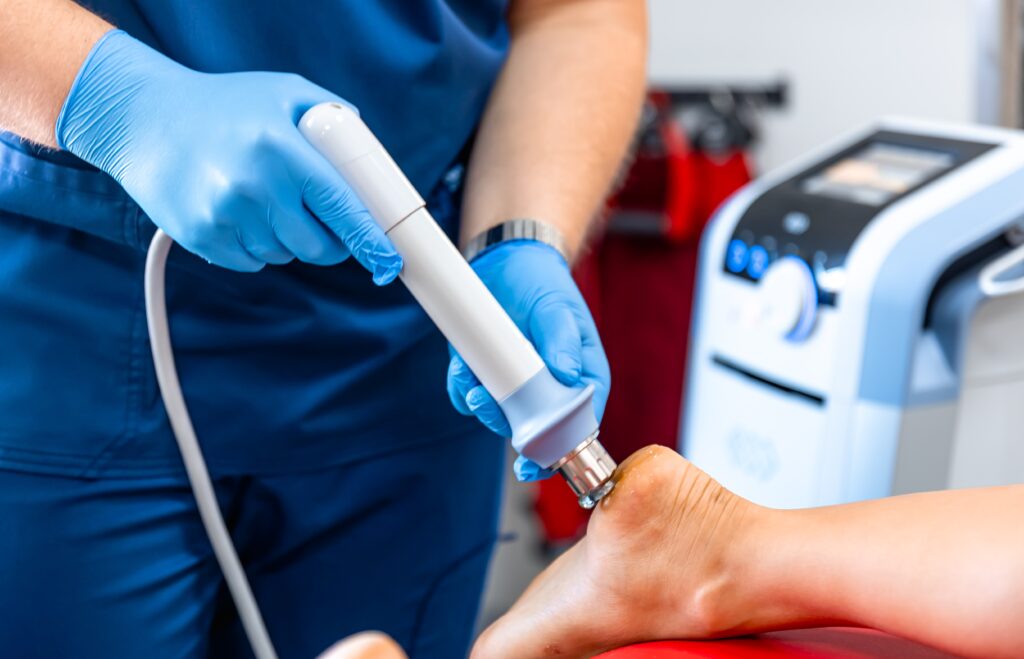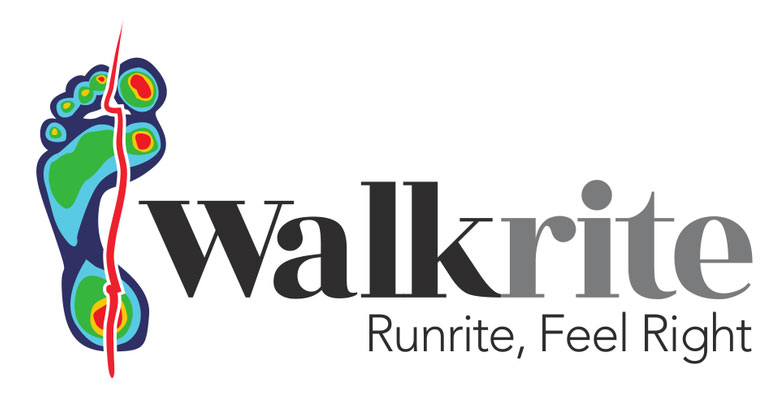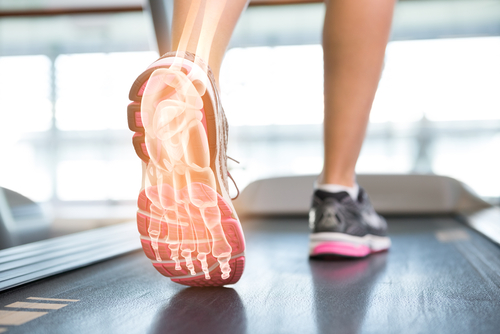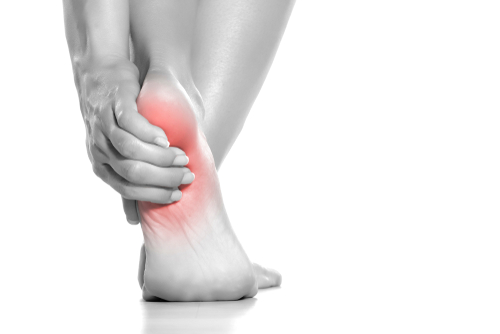Our condition of the month for May 2024 is heel pain. Our feet are a very important asset to us and when they are painful it can be debilitating, stop us doing what we love and having a negative impact on our health and well-being (1,5). Around 10% of people will experience heel pain in their lifetime (20) including 1 in 8 people over the age of 50 (16), but heel pain is it not always straightforward. One of the most common causes of heel pain is plantar fasciitis (plantar fasciopathy ) but there are actually over 50 different causes of heel pain including conditions linked to bones, soft tissue, infection, nerves or tumours.
We are highlighting heel pain this month to raise awareness about this condition and the importance of getting a diagnosis and effective treatment plan quickly. We commonly see patients in clinic after suffering for months or years and after trying a wide variety of home treatments with little to no success. However, if heel pain is identified and treated early, you are more likely not to need as much treatment for as long and will be able to get back to the things you love doing more quickly. This is why we have created a rapid access heel pain clinic. If you would like more details, click here or continue reading to learn more about heel pain below.
What is heel pain? Heel pain is a general term used to describe pain and discomfort experienced anywhere on or around the under surface, back or sides of the heel. Most people know of or have heard of plantar fasciitis (known as plantar fasciopathy clinically) as it is the most common cause of heel pain at 80% of all cases (16). The term plantar fasciitis is a bit of a misnomer as evidence suggests that the inflammation part of the name (-itis) is not present in the plantar fascia in this condition. It is therefore more appropriately termed plantar fasciopathy, clinically, meaning a process of degeneration (10).
What is the plantar fascia? The plantar fascia is a thick band of connective tissue located on the bottom of the foot which runs from your heel bone to the base of your toes. The function of the fascia is to help the foot absorb shock and provides a stable platform to push-off on. These opposite and very different functions of the plantar fascia mean that it is vulnerable to stress and it can then become overworked, overloaded and damaged. This continual stress can make the plantar fascia thicker, less elastic and painful (12,2).
What does plantar fasciopathy feel like? Symptoms are often gradual in onset and described as a dull ache, sharp or burning pain around the bottom or inside of the heel. Pain can often be felt first thing in the morning when getting out of bed or the first step after a period of inactivity. The pain may ease initially with movement but may worsen again with extended periods of weight-bearing activity (13).

Who is at risk? The demands on the plantar fascia are huge in normal activity however additional stress on the fascia can be caused by abnormal loading or stretching of the fascia(19) relating to:
- Age (more common in people between the ages of 40 and 60)
- High impact activities (such as running)
- Foot mechanics (if excessive load and stress during standing or movement is placed on the fascia due to the body’s framework (anatomy) and the way it and the foot moves
- Increased bodyweight / obesity
- Standing occupations
Can children have plantar fasciopathy? Heel pain is also a common in children, but differs from adult heel pain as it is usually related to development and the growth plate in the heel bone (Sever’s disease) as opposed to plantar fasciopathy, which is not ordinarily seen in children. If heel pain is problematic in a child, it is important for them to be assessed to identify the cause and rule out any other issues(26). If your child has heel pain, this can be assessed and diagnosed in our Musculoskeletal (MSK) Children’s Podiatry appointment.
How is plantar fasciopathy diagnosed? Plantar fasciopathy is usually diagnosed in clinic by taking a thorough medical history and conducting a physical assessment. Further investigations may be warranted depending on the diagnosis or severity of the condition. It is also important to rule out the other causes of heel pain as they may need a very different treatment plan or investigations.

How can heel pain be treated? It is important to treat heel pain as soon as possible to prevent it getting worse and becoming more difficult to resolve. Once heel pain has been present for a longer period, it can continue for over two years so rapid assessment and treatment-planning can be really beneficial in this condition.
Treatments you can try at home
- Changing activities that aggravate the symptoms or resting
- Avoiding walking barefoot or in unsupportive footwear
- Using heel pads to cushion the area
- Weight loss programmes to reduce the load on the heel
- Regular stretching of the calf and foot
- Analgesics and ice application for short term symptom-relief (17)
Treatments in clinic
Treatments will vary depending on the diagnosis, how long the symptoms have been present, what previous treatments have been tried and what is found in the clinical assessment. Most patients will see an improvement or resolution within 12 months with non-surgical therapy (16,7).
Our treatments include:
- Tailored stretching or specific strengthening exercises (18,21,23,9)
- Taping (19)
- Night splints
- Footwear advice
- Foot orthoses (8)
- Extracorporeal Shockwave therapy (6,3,14)
- Gait re-training to change the load on the foot when you are walking or running
Despite treatment, around 10% of people may experience more persistent symptoms. Research highlights that women may experience symptoms for longer, especially if the condition has been present for more than three months (4). If the treatments above have been exhausted, then referral for more invasive treatments may be considered including:
- Corticosteroid infiltration
- Platelet rich plasma (PRP) infiltration (21)
- Surgery may be considered (11) but should always be a last resort
- Other treatments are available in the management of plantar fasciopathy, however, to date, the evidence is of limited quantity or quality
More questions about heel pain? Please contact us if you would like more details about our rapid access heel pain clinic and the treatments that we offer or book here if you would like to make an appointment.
References
1. Awale, A., Dufour, A.B., Katz, P., Menz, H.B. and Hannan, M.T. (2016) Severity of foot pain is linked to the prevalence of depressive symptoms. Arthritis care & research, [online] 68(6), pp.871–876. doi:https://doi.org/10.1002/acr.22779.
2. Chen, H., Ho, H.-M., Ying, M. and Fu, S.N. (2013) Association between plantar fascia vascularity and morphology and foot dysfunction in individuals with chronic plantar fasciitis. Journal of Orthopaedic & Sports Physical Therapy, 43(10), pp.727–734. doi:https://doi.org/10.2519/jospt.2013.4774.
3. Gerdesmeyer, L., Frey, C., Vester, J., Maier, M., Weil, L., Weil, L., Russlies, M., Stienstra, J., Scurran, B., Fedder, K., Diehl, P., Lohrer, H., Henne, M. and Gollwitzer, H. (2008) Radial extracorporeal shock wave therapy is safe and effective in the treatment of chronic recalcitrant plantar fasciitis: results of a confirmatory randomized placebo-controlled multicenter study. The American Journal of Sports Medicine, [online] 36(11), pp.2100–2109. doi:https://doi.org/10.1177/0363546508324176.
4. Hansen, L., Krogh, T.P., Ellingsen, T., Bolvig, L. and Fredberg, U. (2018) Long-term prognosis of plantar fasciitis: A 5- to 15-year follow-up study of 174 patients with ultrasound examination. Orthopaedic Journal of Sports Medicine, 6(3), p.232596711875798. doi:https://doi.org/10.1177/2325967118757983.
5. Irving, D.B., Cook, J.L., Young, M.A. and Menz, H.B. (2008) Impact of chronic plantar heel pain on health-related quality of life. Journal of the American Podiatric Medical Association, 98(4), pp.283–289. doi:https://doi.org/10.7547/0980283.
6. Janice, Fabio Luciano Arcanjo, Leporace, G., Metsavaht, L., Cristiano Sena Conceição, Vinicius, M., Marçal, E., Carolina Cunha Moraes and Mansueto Gomes Neto (2022) Effects of therapeutic interventions on pain due to plantar fasciitis: A systematic review and meta-analysis. Clinical rehabilitation , 37(6), pp.727–746. doi:https://doi.org/10.1177/02692155221143865.
7. Klein, S.E., Dale, A.M., Hayes, M.H., Johnson, J.E., McCormick, J.J. and Racette, B.A. (2012) Clinical Presentation and Self-Reported Patterns of Pain and Function in Patients with Plantar Heel Pain. Foot & Ankle International, 33(9), pp.693–698. doi:https://doi.org/10.3113/fai.2012.0693.
8. Landorf, K.B., Keenan, A.-M. and Herbert, R.D. (2006) Effectiveness of Foot Orthoses to Treat Plantar Fasciitis. Archives of Internal Medicine, 166(12), p.1305. doi:https://doi.org/10.1001/archinte.166.12.1305.
9. Latey, P.J., Burns, J., Hiller, C. and Nightingale, E.J. (2014) Relationship between intrinsic foot muscle weakness and pain: a systematic review. Journal of Foot and Ankle Research, 7(1). doi:https://doi.org/10.1186/1757-1146-7-s1-a51.
10. Lemont, H., Ammirati, K.M. and Usen, N. (2003) Plantar Fasciitis: A degenerative process (fasciosis) without inflammation. Journal of the American Podiatric Medical Association, 93(3), pp.234–237. doi:https://doi.org/10.7547/87507315-93-3-234.
11. MacRae, C.S., Roche, A.J., Sinnett, T.J. and O’Connell, N.E. (2022) What is the evidence for efficacy, effectiveness and safety of surgical interventions for plantar fasciopathy? A systematic review. PLOS ONE, 17(5), p.e0268512. doi:https://doi.org/10.1371/journal.pone.0268512.
12. Mahowald, S., Legge, B.S. and Grady, J.F. (2011) The Correlation Between Plantar Fascia Thickness and Symptoms of Plantar Fasciitis. Journal of the American Podiatric Medical Association, 101(5), pp.385–389. doi:https://doi.org/10.7547/1010385.
13. McPoil, T.G., Martin, R.L., Cornwall, M.W., Wukich, D.K., Irrgang, J.J. and Godges, J.J. (2008) Heel Pain—Plantar Fasciitis. Journal of Orthopaedic & Sports Physical Therapy, 38(4), pp.A1–A18. doi:https://doi.org/10.2519/jospt.2008.0302.
14. Melese, H., Alamer, A., Getie, K., Nigussie, F. and Ayhualem, S. (2021) Extracorporeal shock wave therapy on pain and foot functions in subjects with chronic plantar fasciitis: systematic review of randomized controlled trials. Disability and Rehabilitation, 44(18), pp.1–8. doi:https://doi.org/10.1080/09638288.2021.1928775.
15. Morrissey, D., Cotchett, M., J’Bari, A.S., Prior, T., Griffiths, I.B., Rathleff, M.S., Gulle, H., Vicenzino, B. and Barton, C.J. (2021) Management of plantar heel pain: a best practice guide informed by a systematic review, expert clinical reasoning and patient values. British Journal of Sports Medicine, [online] 55(19). doi:https://doi.org/10.1136/bjsports-2019-101970.
16. Neufeld, S.K. and Cerrato, R. (2008) Plantar Fasciitis: Evaluation and Treatment. Journal of the American Academy of Orthopaedic Surgeons, 16(6), pp.338–346. doi:https://doi.org/10.5435/00124635-200806000-00006. 16. NICE (2020) CKS is only available in the UK. [online] NICE. Available at: https://cks.nice.org.uk/topics/plantar-fasciitis/.
17. Osborne, J.W.A., Menz, H.B., Whittaker, G.A. and Landorf, K.B. (2019) Muscle function and muscle size differences in people with and without plantar heel pain: A Systematic Review. Journal of Orthopaedic & Sports Physical Therapy, 49(12), pp.925–933. doi:https://doi.org/10.2519/jospt.2019.8588.
18. Radford, J.A., Landorf, K.B., Buchbinder, R. and Cook, C. (2006) Effectiveness of low-dye taping for the short-term treatment of plantar heel pain: a randomised trial. BMC Musculoskeletal Disorders, 7(1). doi:https://doi.org/10.1186/1471-2474-7-64.
19. Riddle, D.L., Pulisic, M., Pidcoe, P. and Johnson, R.E. (2003) Risk factors for plantar fasciitis. The Journal of Bone and Joint Surgery-American Volume, [online] 85(5). pp.872–877. doi:https://doi.org/10.2106/00004623-200305000-00015.
20. Rompe, J.D., Cacchio, A., Weil, L., Furia, J.P., Haist, J., Reiners, V., Schmitz, C. and Maffulli, N. (2010) Plantar fascia-specific stretching versus radial shock-wave therapy as initial treatment of plantar fasciopathy. The Journal of Bone and Joint Surgery-American Volume, [online] 92(15), pp.2514–2522. doi:https://doi.org/10.2106/jbjs.i.01651.
21. Singh, P., Madanipour, S., Bhamra, J.S. and Gill, I. (2017) A systematic review and meta-analysis of platelet-rich plasma versus corticosteroid injections for plantar fasciopathy. International Orthopaedics, 41(6), pp.1169–1181. doi:https://doi.org/10.1007/s00264-017-3470-x.
22. Siriphorn, A. and Eksakulkla, S. (2020) Calf stretching and plantar fascia-specific stretching for plantar fasciitis: A systematic review and meta-analysis. Journal of Bodywork and Movement Therapies, 24(4), pp.222–232. doi:https://doi.org/10.1016/j.jbmt.2020.06.013.
23. Van Leeuwen, K.D.B., Rogers, J., Winzenberg, T. and van Middelkoop, M. (2015) Higher body mass index is associated with plantar fasciopathy/plantar fasciitis’: systematic review and meta-analysis of various clinical and imaging risk factors. British Journal of Sports Medicine, 50(16), pp.972–981. doi:https://doi.org/10.1136/bjsports-2015-094695.
24. Whittaker, G.A., Munteanu, S.E., Menz, H.B., Tan, J.M., Rabusin, C.L. and Landorf, K.B. (2017) Foot orthoses for plantar heel pain: a systematic review and meta-analysis. British Journal of Sports Medicine, [online] 52(5), pp.322–328. doi:https://doi.org/10.1136/bjsports-2016-097355.
25. Wiegerinck, J.I., Yntema, C., Brouwer, H.J. and Struijs, P.A.A. (2013) Incidence of calcaneal apophysitis in the general population. European Journal of Pediatrics, 173(5), pp.677–679. doi:https://doi.org/10.1007/s00431-013-2219-9.


